NBA Profiling and Monitoring
Available in:
EN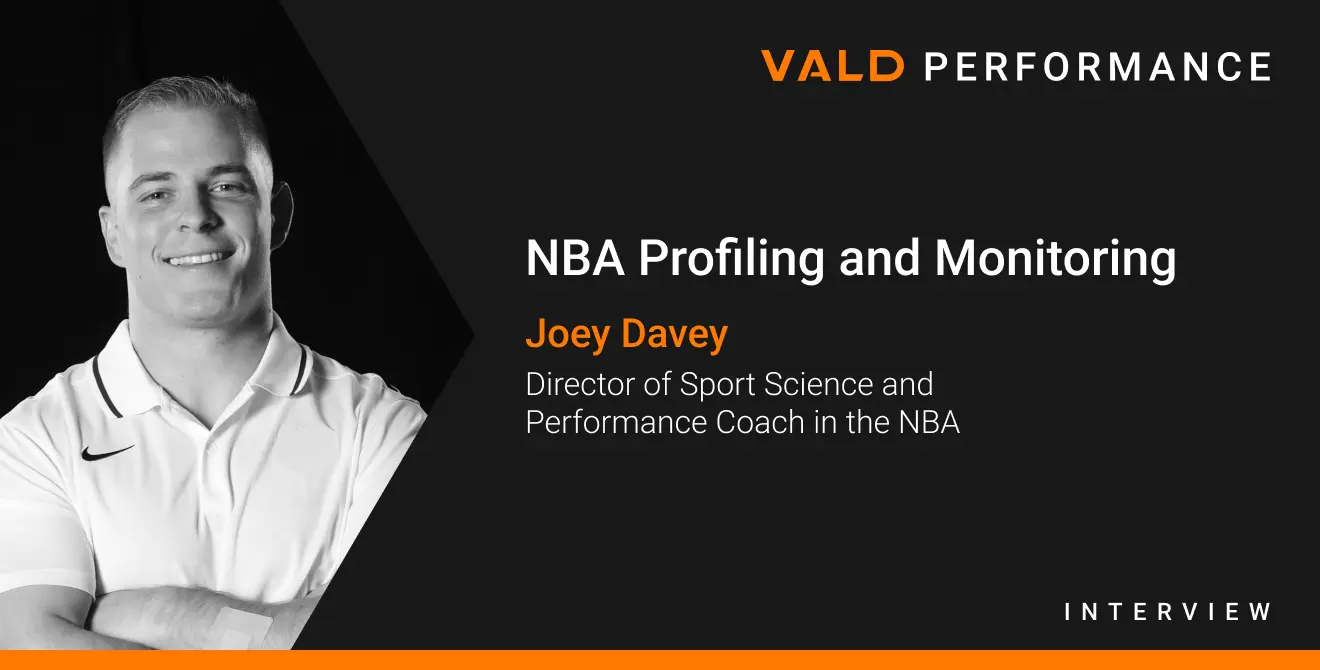
In this interview, we speak with Joey Davey, a Director of Sport Science/Performance Coach in the National Basketball Association (NBA). Joey provides insights into how to use ForceDecks and DynaMo for player performance optimization strategies, individualized training protocols and innovative testing procedures to ensure basketball players remain prepared for their competition.
What is your process for determining key performance indicators (KPIs) for players?
I view movement and performance through the lens of constraints and capacities, which then reveal the KPIs to target.
Constraints are commonly seen as limitations of the athlete, which can be as simple as strength or as complex as the social and tactical demands of basketball. Capacities, on the other hand, are beneficial attributes or positive qualities that allow the athlete to excel in their environment.
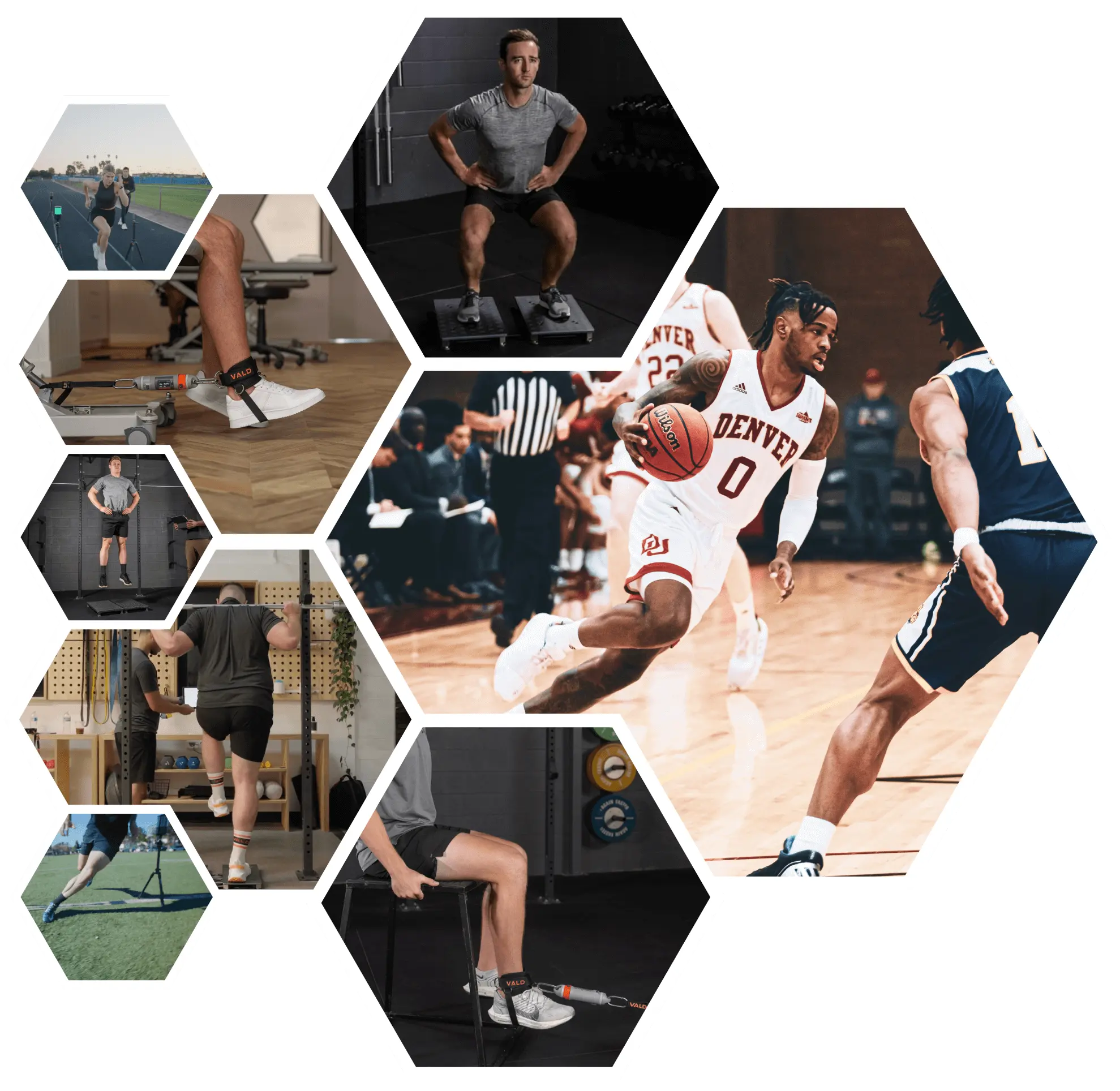
A collage of common assessments for determining constraints and capacities in basketball.
Our goal as performance coaches is to strategically address each athlete's constraints to unlock potential while amplifying their capacities to thrive within the demands of basketball.
Our goal as performance coaches is to strategically address each athlete's constraints to unlock potential and thrive within the demands of basketball.
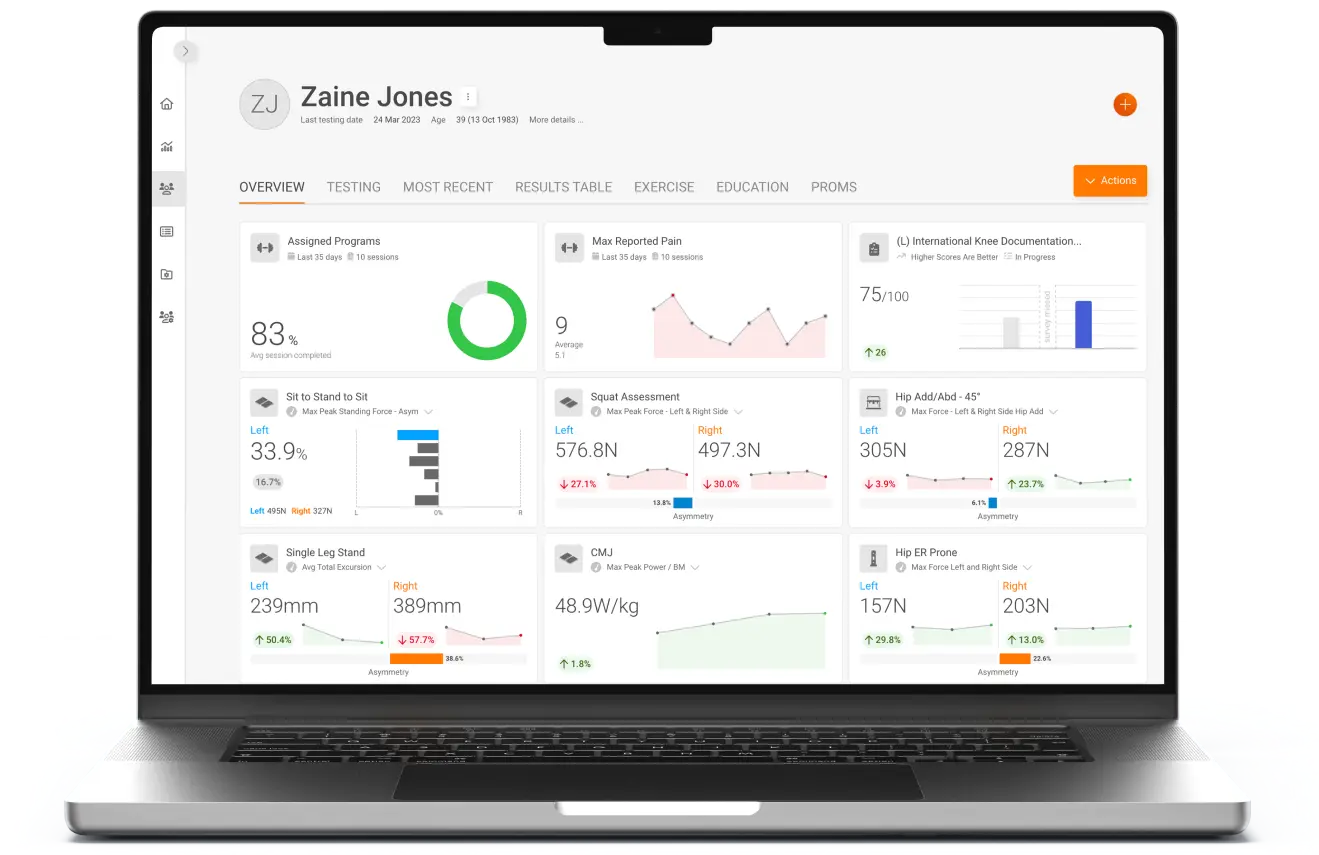
VALD Hub monitoring dashboard displaying various options that provide a brief snapshot of an athlete’s constraints and capacities.
As an example, if an athlete has a significant asymmetry favoring their left side during a countermovement jump (CMJ), they may have right-sided constraints that limit that leg’s ability to contribute to the jump. These constraints are identified through various metrics offered with ForceDecks, such as eccentric deceleration impulse.
Through this constraints-led approach, each athlete can receive targeted interventions that address specific qualities that may hinder performance. For instance, if an athlete has a history of a right knee injury, an objective performance test can identify future risks, such as a deficit in peak force. With training interventions now guided by KPIs, the coach has a clearer set of “non-negotiables” for the athlete to focus on.
What are the key qualities that successful basketball players typically possess?
The ability to attenuate force is crucial. Basketball is a change of direction-dominant sport. This means that players must effectively “absorb” force or decelerate their body’s momentum before reaccelerating in a different direction.
This ability to decelerate and generate high forces relative to their body weight improves their explosiveness and overall athletic performance. This is why the best athletes often have elite reactive strength index-modified (RSI-Mod) and eccentric deceleration rate of force development (RFD) values.
The ability to decelerate and generate high forces relative to their body weight improves explosiveness and overall athletic performance.
An efficient and reliable way to measure the characteristics unique to basketball players is through the various jump and isometric tests on ForceDecks. The CMJ, drop jump and isometric tests like the isometric mid-thigh pull (IMTP) or seated isometric calf raise are great ways to utilize ForceDecks and start to understand an athlete's performance.
Additionally, these tests allow a practitioner to measure qualities deemed appropriate by a coach, like reactive strength and RFD, across a spectrum of movements. These tests can also assist in monitoring often injured joints, like the knee and ankle. Both dynamic and isometric tests reveal an athlete's ability to generate force at different speeds and angles, a critical key to success for both health and performance.
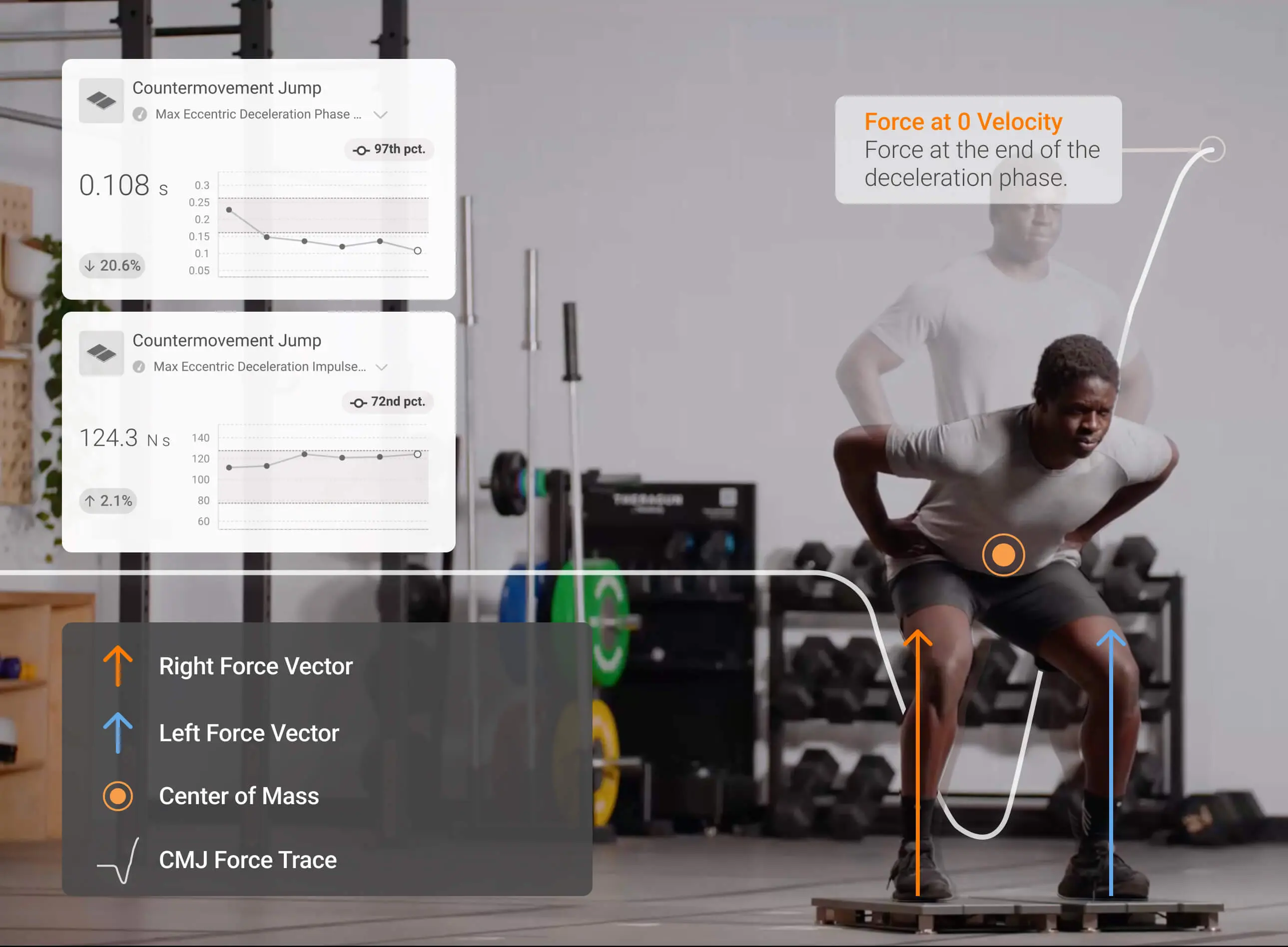
How would you compare the profiling process for two players that move very differently?
Basketball is incredibly variable in terms of athlete archetypes. Not only are there large differences by position, but there are also within-position differences. When profiling a more dynamic athlete, it's beneficial to focus on maintaining the qualities that make them "twitchy" and reactive, such as reactive strength index (RSI), eccentric peak force and jump height when testing on ForceDecks.
For a slower, more methodical player, reactive strength or top-speed development could be beneficial to train and assess, but detracting from the strong attributes of their play type could have unintended consequences. However, peak forces and impulse characteristics are critical metrics for evaluating and monitoring the capacities of all players, regardless of their athletic archetype.
…peak forces and impulse characteristics are critical metrics for evaluating and monitoring the capacities of all players, regardless of their athletic archetype.
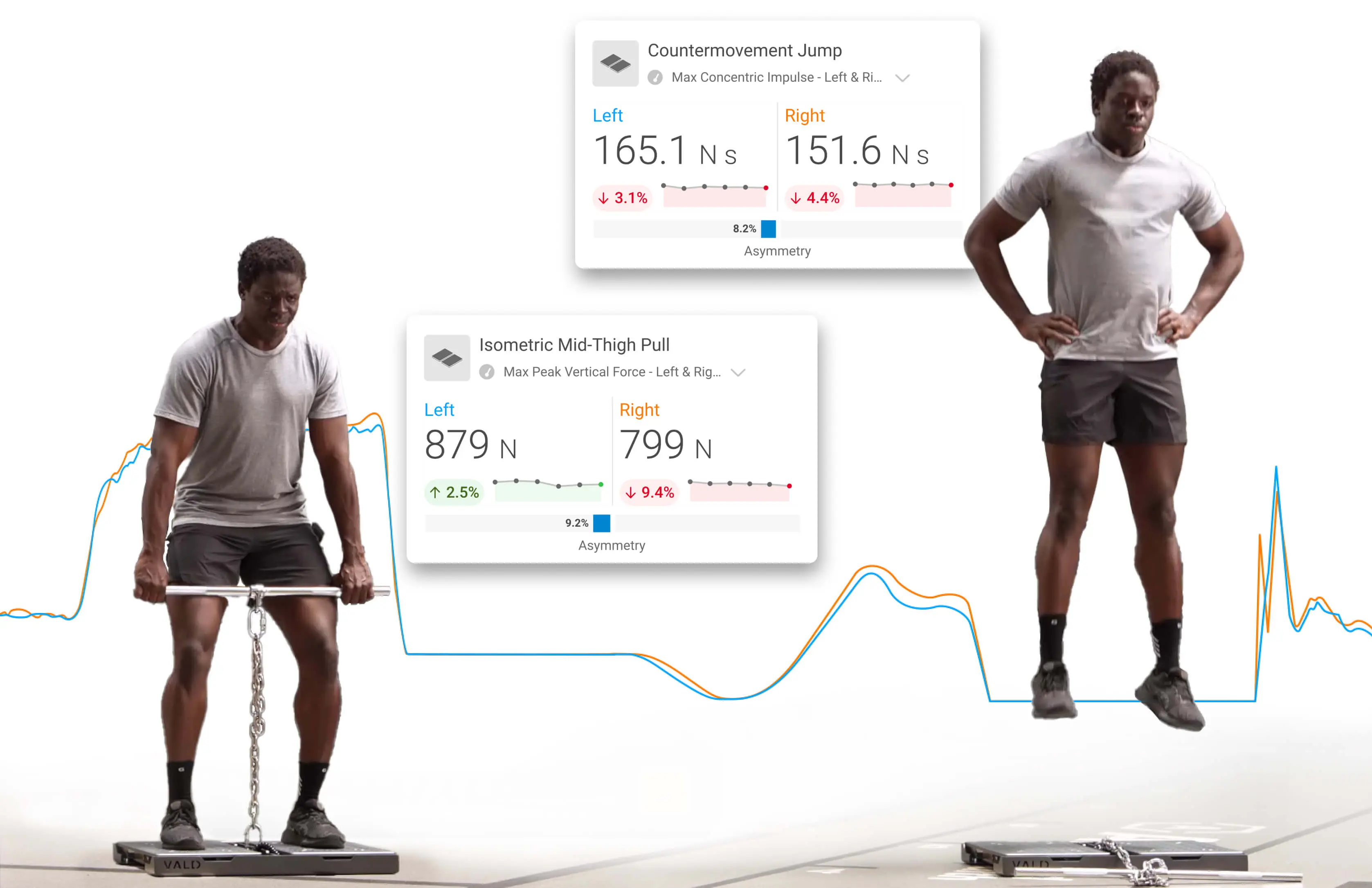
What changes when you are profiling versus monitoring players?
Profiling and monitoring are two sides of the same coin. The goal of profiling is to get a comprehensive view of an athlete's capacities when they’re at their best, both in isolated and integrated actions.
Monitoring, on the other hand, aims to measure the difference between the athlete's best expression of their capacities and what they are currently capable of. To do this effectively requires a practitioner to carefully consider which tests to use and which metrics to assess.
At a high level, a practitioner should choose tests that align with the sport's patterns and allow for comparison across a population. For example, since basketball is a sport dominated by reactive strength, incorporating a jump test or a jump-related movement in the profiling process makes sense.
…choose tests that align with the sport's patterns and allow for comparison across a population… [for basketball] incorporating jump-related movement derivatives in the profiling process makes sense.
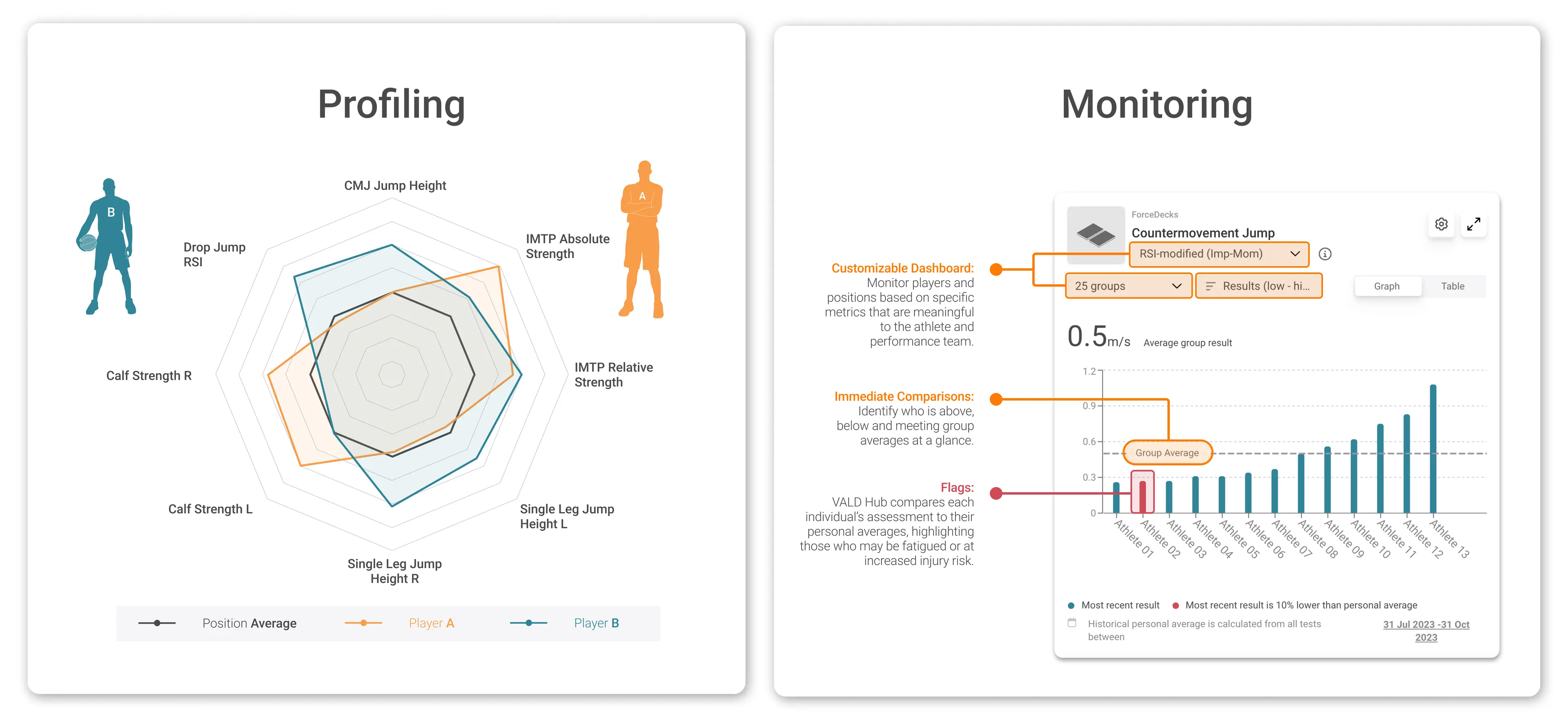
While an upper body repetition-effort test could be insightful, it's unlikely to yield the same insights into constraints and capacities that would affect sport performance or injury prevention. The metrics that represent reactive strength in the jump should be assessed during the analysis and then monitored for performance decrements or changes over time.
The profiling phase of athlete assessment should challenge the athlete to generate force at various velocities and across different kinematic actions. In doing so, the athlete may reveal constraints that could inhibit their performance.
This involves performing a CMJ and squat jump to determine the eccentric utilization ratio (EUR) to profile reactive strength capacities across a roster. With this information, certain athletes could be prescribed supplemental training to improve their stretch-shortening cycle (SSC) capacities.
[Profiling] should challenge the athlete to generate force at various velocities and across different actions. In doing so, the athlete may reveal constraints that could inhibit their performance.
After an athlete is profiled, monitoring metrics such as eccentric peak force, jump height, and various phase symmetries becomes crucial for identifying potential performance limitations.
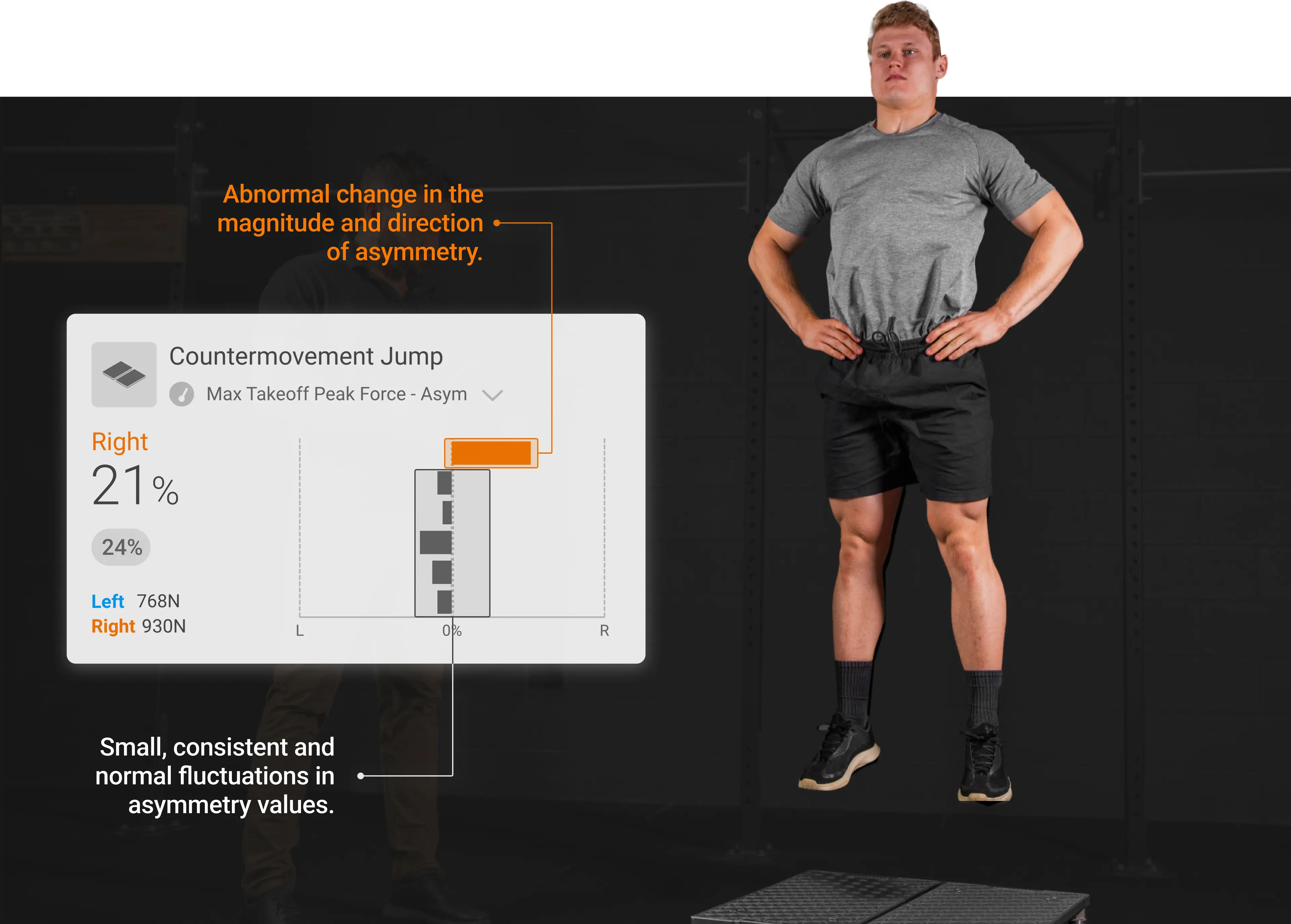
How do you approach conditioning for players?
It depends on the type of conditioning the player needs. Typically, conditioning in the classical sense is primarily built through on-court volume going into the season. This is often the athlete's preference also. Sometimes, individual cases require novel conditioning methods, and utilizing the same constraints and capacity framework can prescribe that training.
What are some common misconceptions about the implementation of technology in sports?
[Learn] from the information over time rather than making instant changes just because it's available.
A common misconception is the immediate utility of data. There is a massive upside to learning from the information over time rather than making instant changes just because it's available. Gathering data to understand patterns and adapt our programs accordingly may not be the flashy approach to sports science, but it yields valuable results in the long term.
Learning and refining decision-making based on collected data is an ongoing process. That is one of the best parts about having robust systems – they allow us to explore data more deeply, revealing patterns and insights that may not have been evident initially.
Gathering data to understand patterns and adapt our programs accordingly may not be the flashy approach to sports science, but it yields valuable results in the long term.
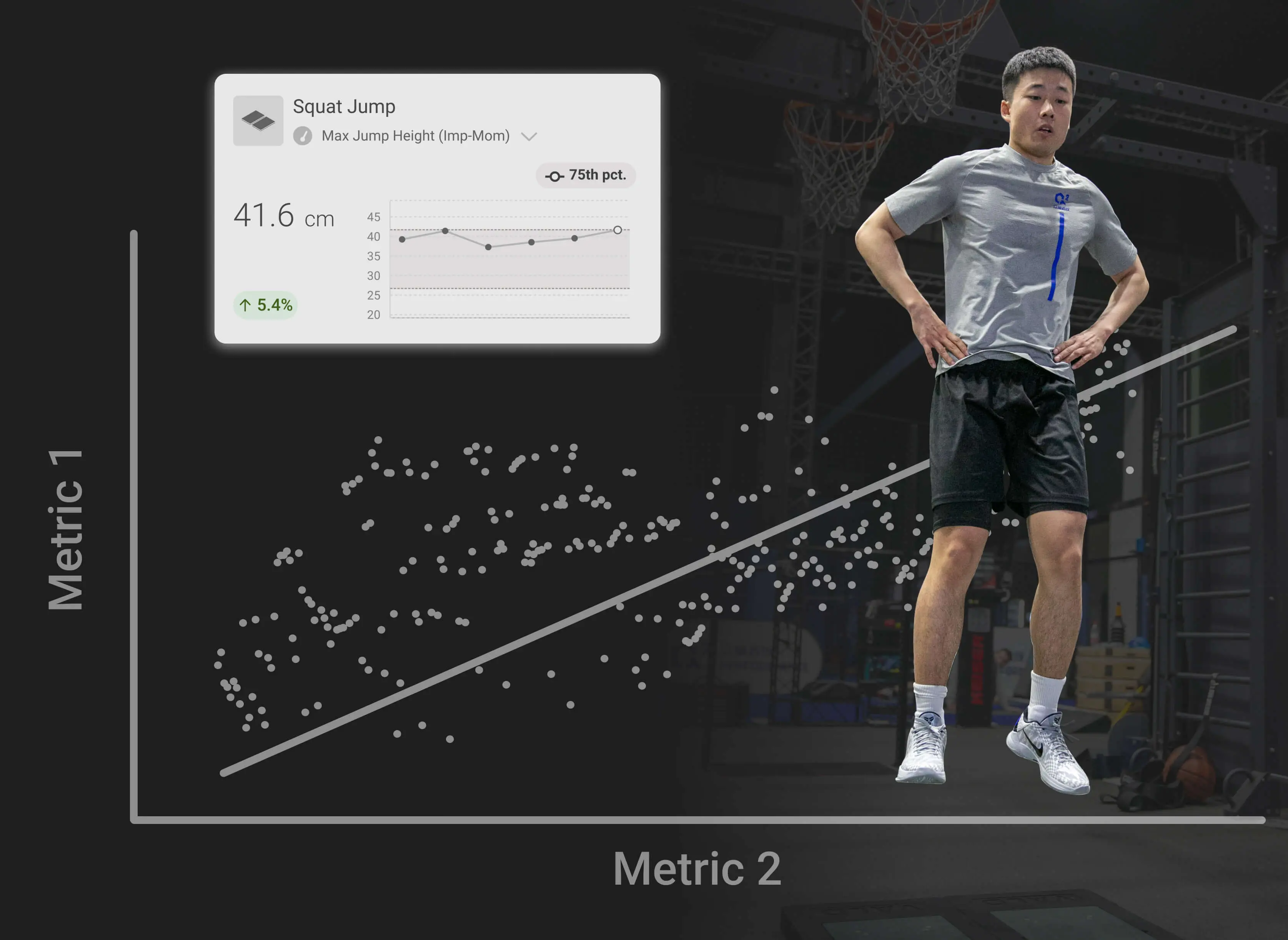
If you would like to learn more about integrating VALD’s human measurement technology into your organization to enhance athlete profiling, monitoring and data-driven decision-making, please reach out here.
